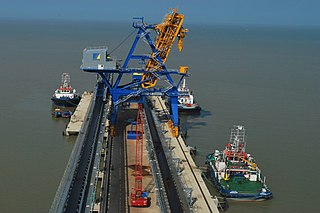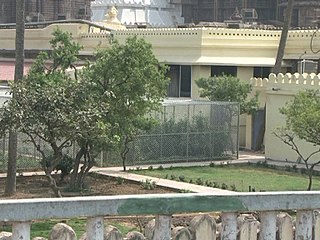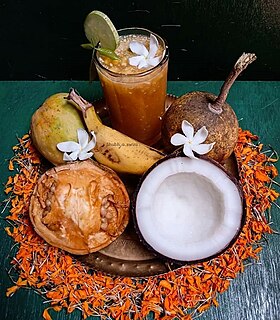Maha Vishuva Sankranti
The Odia new year Maha Vishuva Sankranti day is very famous around the premises of the shrine. Locally called Uda Parba, Nila Parba after worshiping Nilakanth Shiva, Chadaka Yatra. Half a million people gather around the shrine and fast for several days to fulfill their wishes. It was built in typical Kalinga Architecture style of Old Odisha temples.
Chandaneswar is famous for Chandaneswar temple of Lord Siva Every year in the month of 'Chaitra' (from 14 March to 14 April) an Odisha famous "Chadak Mela/CHaitra Mela/Udaa". It continues for 13 days (13 Arghya to 1 Arghya discounting). The Bhaktas (devotees) accept paita (pabitrata). The Bhaktas with their 'manaskamana' come from all over the country. From last 5th Arghya to 3rd Arghya the Bhaktas increase in numbers. Near about 3 to 4 lakh of Bhaktas offer their Arghyas (prayer) at night only.
They fast the whole day not even swallowing their spit. Last 4th Arghya day "Kamina Baha" (marriage of Lord Siva with Kamina, daughter of demon Nila), second Arghyaday "Nila Parba" and the first Arghya day "Paata Parbha (Mala Chandani). As per the rigorous manasik point of view some Bhaktas prick their bodies and tongues with iron nails. The whole gathering is controlled by the Paata Bhakta and Odisha Government. After the Paata Parba the Bhaktas remove their Paitas after their last Arghya and float in the sea but the fair continues another seven or eight days more. More than half million of people gather in that fair. So it is called the second Puri in Odisha.

Mahamaham, also known as Mahamagham or Mamangam, is a Hindu festival celebrated every 12 years in the Mahamaham tank located in the South Indian town of Kumbakonam in Tamil Nadu, India. This 20-acre square tank surrounded by Shiva mandapams is believed by Tamil Hindus to be ancient, and the holy confluence of nine Indian river goddesses: Ganga, Yamuna, Sarasvati, Narmada, Godavari, Krishna, Tungabhadra, Kaveri, and Sarayu, states Diana Eck – a professor of Comparative Religion and Indian Studies. On the day of the Mahamaham festival, the river goddesses and Shiva gather here to rejuvenate their waters, according to a legend in the Periya Purana. The Hindus consider taking a pilgrimage and holy dip at the Mahamaham tirtha on the day of Mahamaham festival as sacred. The event attracts chariot processions, street fairs and classical dance performances in temple mandapas. The 12-year cycle Mahamaham festival in Tamil Nadu is observed in the Hindu calendar month of Magha, and is a symbolic equivalent of the Kumbh Mela in Prayag, Uttar Pradesh.
Makar Sankranti or Uttarayan or Maghi or simply Sankranti, also known in Bangladesh as Poush Sankranti, is a festival day in the Hindu calendar, dedicated to the deity Surya (sun). It is observed each year the day Sun enters the Capricorn zodiac which corresponds with the month of January as per the Gregorian calendar. It marks the first day of the sun's transit into Makara rashi (Capricorn), marking the end of the month with the winter solstice and the start of longer days.

Baripada is a city and a municipality in Mayurbhanj district in the state of Odisha, India. Located along the east bank of the Budhabalanga river, Baripada is the cultural centre of north Odisha. In recent years, it has emerged as an educational hub with the opening of numerous professional colleges.

Bhadrak District is a district of Odisha state in eastern India. Bhadrak city is the headquarters and the largest city of the district.

Rairangpur is a city and a tehsil of Mayurbhanj district in the state of Odisha, India. It is based at about 287 Kilometres from the state capital Bhubaneswar and 82 kilometres from the district headquarters of Baripada and about 73 kilometres from Jamshedpur. The Kharkhai (Suleipat) Dam and the Simlipal Tiger Reserve are the nearby local attraction at the approachable distance, attracting many foreign tourists here.This is a notable mining area of Odisha, comprises iron-ores from Gorumahisani, Badampahar, Suleipat mines.It is Mayurbhanj's second largest city after Baripada.

Jaleswar is a town located in the Balasore district of Odisha, in India. It consists of 144 villages, with four major areas: Bada Bazar, Nua Bazar, Station Bazar, and Purana Bazar. Jaleswar is considered one of the new municipalities in the state, and Jaleswar forms a state assembly constituency along with Balipal Block.

Karanjia is a town in the eastern Indian state of Odisha, about 221 kilometres (134 mi) north of the state capital Bhubaneswar. It is the sub-divisional headquarter of Panchpir sub-division and a Notified Area Council in Mayurbhanj district. It is bounded on its South-East by Deo river which forms the natural district border for Mayurbhanj.

Deotsidh is a pilgrimage town in Barsar tehsil, Hamirpur district, Himachal Pradesh, India. The nearest broad gauge railway station is in Una district, about 60 kilometres (37 mi) distant, and the nearest airport is about 172 kilometres (107 mi) away in Chandigarh.

The Maa Sarala Temple is a Hindu temple in the district of Jagatsinghpur, Odisha, India. It is one of the eight most famous Shakta shrines of Odisha.
This article lists the traditional festivals and other cultural events in the Odisha region of India.Odisha celebrates 13 festivals in 12 months as the saying goes "BAARA MASARE TERATA PARBA"

The Biraja Temple, or Birija Kshetra, is a historic Hindu temple located in Jajpur, Odisha, India. The present temple was built during the 13th century. The principal idol is Devi Durga, who is worshiped as Viraja (Girija), and the temple gave Jajpur the nicknames "Viraja Kshetra" and "Biraja Peetha". The Durga idol has two hands (dwibhuja), spearing the chest of Mahishasura with one hand and pulling his tail with the other. One of her feet is on a lion, and the other is on Mahishasura's chest. Mahishasura is depicted as a water buffalo. The idol's crown features Ganesha, a crescent moon and a lingam. The temple covers a large area, and has several shrines to Shiva and other deities. According to the Skanda Purana it cleanses pilgrims, and it is called the Viraja or the Biraja kshetra. Jajpur is believed to have about one crore of Shiva lingams.

The Taratarini Temple on the Kumari hills at the bank of the River Rushikulya near Brahmapur city in Ganjam District, Odisha, India is worshiped as the Breast Shrine and manifestations of Adi Shakti. The Tara Tarini Shakti Peetha is one of the oldest pilgrimage centers of the Mother Goddess and is one of four major ancient Tantra Peetha and Shakti Peethas in India.

Nabakalebara is a symbolic recreation of the wooden forms of three Hindu deities at Jagannath Temple, Puri. In the cult of Jagannath, the ritual is performed during the eighth, 12th, or 19th year after the previous Nabakalebara. Nabakalebara is an important festival in the Hindu Odia calendar, observed in the Jagannath Temple, Puri. It marks the demise and rebirth of lord Jagannath at Puri. The event involves installation of new images in the Jagannath temple and burial of the old ones in the temple premises at Koili Baikuntha.

Akhandalamani Temple at Aradi village, Odisha, India, is dedicated to Lord Siva. Aradi is about 37 kilometres (23 mi) away from Bhadrak. The present fifty-foot cement and concrete temple structure replaced a wooden temple some time between 1830-1840 AD.

Danda Nata or Danda Jatra is one of the most important traditional dance festivals organized in different parts of South Odisha and particularly in the Ganjam District, the heartland of ancient Kalinga Empire. The Danda Nata festival is being held in the month of Chaitra of every year. As per Ram Prasad Tripathy's article, it is an ancient festival of the Kalinga kingdom and still alive in and around the ancient Kalinga capital Sampa/Samapa i.e modern day Ganjam District. The Participants of Danda are called Danduas and they pray Goddesses Kali and Shiva during this 13-, 18- or 21-day Danda period.

Pana Sankranti, also known as Maha Bishuba Sankranti, is the traditional new year day festival of Odias in Odisha, India. The festival occurs in the solar Odia calendar on the first day of the traditional solar month of Meṣa, hence equivalent lunar month Baisakha. This falls on the Purnimanta system of the Indian Hindu calendar. It therefore falls on 13/14 April every year on the Gregorian calendar.

Raja or Raja Parba or Mithuna Sankranti is a three-day-long festival of womanhood celebrated in Odisha, India. The second day of the festival signifies beginning of the solar month of Mithuna from, which the season of rains starts.

Atri a small village in the Khurda district of Odisha.

The Maa Tarini Temple in Ghatgaon is a famous Hindu Goddess temple dedicated to Maa Tarini.

The Jammu Division is a revenue and administrative division within Jammu and Kashmir, a union territory of India. It consists of the districts of Jammu, Doda, Kathua, Ramban, Reasi, Kishtwar, Poonch, Rajouri, Udhampur and Samba. Most of the land is hilly or mountainous, including the Pir Panjal Range which separates it from the Kashmir Valley and part of the Great Himalayas in the eastern districts of Doda and Kishtwar. Its principal river is the Chenab.














